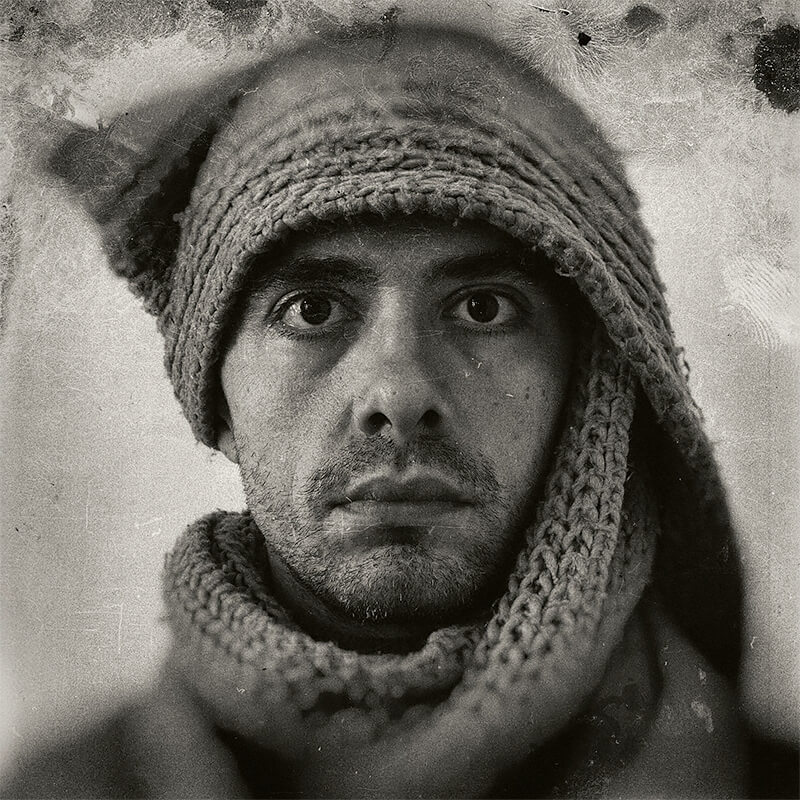Gregory Dargent is a French musician and photographer born in 1977 in Argenteuil. A graduate of the Strasbourg Conservatoire, he has an international career as a musician (electric guitar and oud) as well as a composer. His creations have taken him all over the world, from the Berlin Philharmonic to a small place in the Itabuna Church in Brazil, from the Doha Oud Festival to the "Poisson Rouge" in New York, from the Jazz Festival in Cairo to the auditorium of Warsaw Radio.
Somewhat belatedly fascinated by photography he discovered it accidentally the day of his 38th birthday, anchored in the temporality of film, committed to the abstraction of black and white and advocating its subjectivity, he created in 2018 the Book H., published by Saturn, his first photographic work.
It is an echo in images to the disc H (contemporary trio setting to music the French nuclear tests in the Sahara). This book tells his feelings and his personal awareness during 3 short trips around the seventeenth ground zero French atomic explosions in the 60s, in Reggane and Tamanrasset, Algeria.
His book is acclaimed by the press (Christmas selection Telerama for the book + CD, L'Humanité, L'Oeil de la Photographie, L'Interval, "Par les temps qui courent" on France Culture) and became the subject of his very first exhibition as part of the collective exhibition "Le Rêve d'un mouvement" in Paris in January 2019, alongside, among others, Gilles Roudière, Damien Daufresne, Stephane Charpentier and Gael Bonnefon. This exhibition then travelled to Studio Spiral (Grenoble) in March/April 2019, at Retine Argentique (Marseille) in April/May 2019, Sharjah Art Foundation (E.A.U), Galerie VU'(Paris), Dar Abdelaatif in Algiers and will be on view at Studio Baxton (Brussels) in 2020.
He is selected in 2019 as a "young talent photographer in residence" as part of the Festival Planche (s) Contact of Deauville for which he will create a new exhibition, L'Echappée, and is currently working on his next personal projects, mixing photography, video super 8 and music. The first project is about spirituality and poetry in Haiti, "Black Venus", the second one is about the feeling of underground life mixed with ancient mythologies in Cairo (with musician and photographer Frederic D. Oberland).
